The Nashville Symphony Presents Spanish Nights
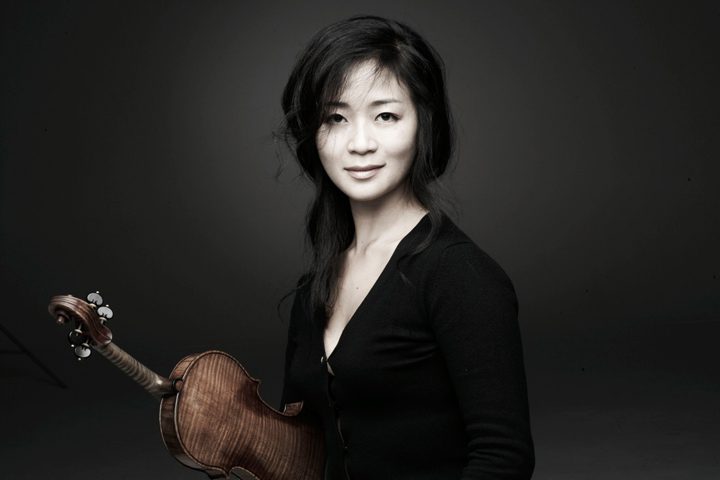
On Saturday, March 23, the Nashville Symphony gave a performance entitled Spanish Nights, featuring guest conductor Miguel Harth-Bedoya. The concert was comprised of four pieces from composers of varied nationalities, but a common Spanish influence, opening with Capriccio espagnol by Nikolai Rimsky-Korsakov, followed by Édouard Lalo’s Symphonie espagnole for Violin and Orchestra, featuring internationally-renowned violinist Chee-Yun. Following intermission, the evening concluded with Joaquín Turina’s Danzas fantásticas, and Manuel de Falla’s Suite from El sombrero de tres picos (The Three-Cornered Hat).

Guest conductor Miguel Harth-Bedoya boasts an impressive international career, and is currently the music director of the Fort Worth Symphony. Harth-Bedoya is also the director and founder of Caminos Del Inka, a nonprofit organization dedicated to the research, discovery, and preservation of South American music. I cannot think of a better conductor for a program of Spanish and Spanish-influenced music.
Nikolai Rimsky-Korsakov completed and premiered Capriccio espagnol in 1887, and it immediately gained favor by audiences and performers alike. Rimsky-Korsakov was inspired to write the piece by some of Glinka’s Spanish-inspired works, and also draws from his time in northwestern Spain while he served in the Russian navy. This piece was originally intended to be a violin concerto, but other solo instruments were incorporated and heavily featured in the composition.
The piece began with enthusiasm, and captured the attention of the audience from the first note. Flawless clarinet solos conversationally wove in and out of the orchestral texture, and possessed the perfect tone, character, and energy of the piece. (He even gave a well-deserved wave of his red cleaning cloth at the end of the piece, which got a nice laugh from the audience!) Each movement flowed seamlessly into the next, and conveyed every emotion and evoked every image that Rimsky-Korsakov intended. Every cadenza and solo passage from the violinist, flutist, and harpist sounded absolutely effortless and showcased the virtuosity of the performers perfectly. It truly was one of the best performances of the piece that I have ever had the pleasure of hearing, and was the perfect way to kick off the evening.
Édouard Lalo composed his Symphonie espagnole after premiering his successful Violin Concerto, and premiered it just one short year later. This piece could easily be considered a violin concerto as well, but Lalo wanted to maintain the image of the violin soloist “soaring above the orchestra” instead. Chee-Yun, the violin soloist of the evening, is a world-class performer and educator, and has performed on five continents and held faculty positions at many well-known universities. Interestingly, she also performs on a violin that was made in 1669!
While this piece is much less in-your-face and outwardly energetic as Capriccio, it still had an attitude that was conveyed by both the soloist and the orchestra. The balance between Chee-Yun and the Nashville Symphony was perfectly conversational and highlighted the proper voices and lines at all times. Chee-Yun’s virtuosity, expressivity, and musicality were truly put front and center at all times and made for a wonderful interpretation of the piece. Most
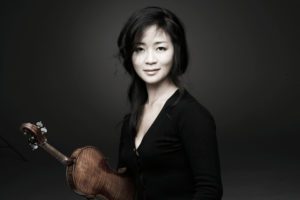
notably, the fourth movement was filled with so much emotion and lyricism, and showcased the vast stylistic range of the Nashville Symphony. In comparison to the Rimsky-Korsakov, it was a bit of gentle slide into intermission, but it was pleasant and enjoyable nonetheless.
Joaquín Turina composed Danzas fantásticas in 1919 and premiered the piece a year later in Madrid. Turina composed the piece once he returned to his home in Spain after spending time during World War I in Paris. It’s no surprise that Danzas fantásticas became his most beloved composition, as it showcases three different, yet equally exciting Spanish dances: the jota, a Basque-inspired dance, and finally a dance in the flamenco style.
No time was wasted after intermission, and the audience was brought right back in with Turina’s exciting Danzas fantásticas. While they did not begin bombastically, they started with a captivating, quiet excitement that steadily grew throughout the piece and kept the audience on the edge of their seats the entire time. The transitions between each dance were clear, but seamless and well executed, and all of the woodwind and brass features were truly extraordinary. It was also very refreshing to hear a selection by a Spanish composer, and it seemed to recapture the attention of anyone in the audience who may have wandered off a little during intermission.
Manuel de Falla composed El sombrero de tres picos (The Three-Cornered Hat) between 1916 and 1918, and premiered the full ballet in 1919. De Falla, like Turina, spent time in Paris, and was influenced by Ravel and Debussy. This work also came out of de Falla’s time in Paris and relationship with Serge Diaghilev, and was based on a novella by Pedro Antonio de Alarcon. Its story follows a miller, his wife, and their attempts to bring down the town magistrate after he attempts to seduce the miller’s wife. These three characters are represented by different instruments and themes throughout the orchestra, and in this suite, their stories are told through a series of Spanish dances, such as the jota, the fandango, and the farruca.
The suite began with an exciting trumpet and timpani duet, keeping the energy of the concert and starting the final piece of the concert strongly. In fact, the large number of brass features in the piece was a wonderful change of pace, and surely excited the low brass to have a great deal of moving parts! All of the woodwind features in the piece, particularly the English horn, were flawless as always, and really added character to the performance. Once again, the seamless transitions between movements and even suites was wonderful, and it breathed a certain life into the story of the piece. The concert concluded with a rather fast-paced but well done jota, and once again was very well-received by the audience.
All in all, it was a fantastic concert filled to the brim with energy. The masterful conducting and interpretation of Miguel Harth-Bedoya was matched by the playing of the Nashville Symphony and guest artists Chee-Yun. As always, it was pleasure to witness these musicians performing together.
Jeff “Tain” Watts Dazzles Alongside Performers at the 2019 MTSU Illinois Jacquet Jazz Festival
By Derek Volkmann
The weekend of March 16, 2019 proved to be a bustling time for the Middle Tennessee State University School of Music. The School of Music held its annual jazz festival named in honor of jazz saxophonist Jean-Baptiste “Illinois” Jacquet, one of the music’s famed “Texas Tenors” known for his work with Lionel Hampton, Cab Calloway, and Count Basie. The festival is a time when middle and high school students of jazz can participate in clinics and performances given by the School of Music jazz faculty alongside renowned artists in the field. The guest artists on Saturday were Nashville trombonist Roland Barber and internationally revered drummer Jeff “Tain” Watts. The performance Saturday featured both performers alongside the jazz faculty, college students, and high school honors students in an impressive evening of improvisation, complex ensemble writing, and musical interplay between instrumentalists of the highest caliber.

The evening opened with a video made in honor of Illinois Jacquet. Created by the Jacquet foundation, the video highlighted his career as a saxophonist and the carrying of his legacy by his family through collaborating with MTSU to hold the festival and scholarships given to college students.
After the screening of the video, MTSU’s Jazz Ensemble I filed onto the stage under the leadership of Director of Jazz Studies Jamey Simmons. The band featured three selections: “Signal Fires” by Fred Sturm, “Everyday I Have the Blues” by Aaron “Pinetop” Sparks which featured vocalist Nia Morris, and an arrangement of George Harrison’s “Here Comes the Sun” by Mike Holober. These selections demonstrated the students’ musical maturities, executing each selection with careful balancing of the various sections of instruments, navigating through complex time signature changes, authentically addressing period-specific stylistic expressions, and supporting each soloist.
After Jazz Ensemble I performed, Dr. Pamela Jacquet Davis, Illinois’ daughter and President of the foundation presented remarks with Board Member at Large John Henry regarding with the foundation’s work. They also awarded certificates to the current Illinois Jacquet Foundation scholarship recipient Gabriel Collins, a junior Jazz Studies major at MTSU, and to the members of the High School Honors Combo, who were under the direction of Assistant Director of Jazz Studies Don Aliquo. The honors combo featured a select group of students from the middle-Tennessee region recognized for their talent in jazz. The group was comprised of saxophonists Graham Broome and Jacob Kitchen, pianist Tyler Bullock, guitarist Samuel Feinstein, upright bassist Baily Johnstone, and drummer Ian Strubino as well as Collins, who collectively performed an arrangement of Wayne Shorter’s “Night Dreamer.”
A brief intermission followed the performance of the High School Honors Combo. The MTSU Faculty Jazztet, comprised of Jamey Simmons on trumpet, Don Aliquo on soprano and tenor saxophones, Matt Endahl on piano, and Jonathan Wires on upright bass filed onto the stage followed by Mr. Watts on drums. The group played four selections, all written by Watts. The first tune was “14E” after which the tune “Sebbin’” followed. The group then moved into a ballad called “412” before playing a rousing number called “Return of the Jitney Man.” Each piece showcased Watts’ incomparable ability of comping for each soloist and interaction with the other rhythm section members that went beyond conventional figures and phrases. By weaving complex polyrhythms with steady grooves, Watts was able to create tension and release that asserted himself as not merely a timekeeper but a contributor of equal interest and strength within the instrumental collective.

After the Faculty Jazztet concluded “Return of the Jitney Man,” Jazz Ensemble I made their way onto the stage accompanied by trombonist Roland Barber, a Nashville-based instrumentalist who has enjoyed performing with a diverse list of artists such as Wynton Marsalis, Chaka Khan, and the Saturday Night Live Band. Barber was the featured soloist on Watts’ piece “Jonesin’.” Barber took a motivic approach to his improvisation, gradually exploring the range capabilities of his instrument as well as increasing the rhythmic diminutions throughout each successive phrase. This piece also featured solos from selected students including pianist Ray Palousek, baritone saxophonist Kyle Etges, and trombonist David Cooper.
The second selection performed by Jazz Ensemble I with Mr. Watts featured Aliquo on tenor saxophone. This up-tempo number called “Mr. J.J.” also showcased the saxophone section of the band with Davante Buford and Gabriel Collins on tenor, Zach Tyler and PJ Scott on soprano and alto, and Kyle Etges on baritone. Each saxophonist took an extended solo before culminating in an impressive soli feature with dazzling double-time phrases.
The final selection of the evening was the classic tune “Flying Home,” a piece written by Benny Goodman, Eddie DeLange, and Lionel Hampton that made Illinois Jacquet famous due to his solo improvisation on the tune in 1942. All of the featured guests and faculty with the addition of vibraphonist Brian Mueller performed with the big band, closing the evening with rousing shout choruses, highly expressive solos, and hard-swinging grooves.
All in all, the evening which stretched from 7:30 p.m. to just shortly before 10:00 p.m. provided the audience and participants alike with inspiring performances and recognitions by all who were involved. To find out more information regarding the MTSU School of Music Jazz Artist series, visit https://www.mtsu.edu/music/jazzseries.php.
Christian McBride and Edgar Meyer Delight at the Blair School of Music
On Thursday evening, March 14, 2019, the Ingram Hall of Performing Arts at Vanderbilt University’s Blair School of Music was filled with campus students, alumni, and other members of the community eagerly awaiting the highly anticipated performance of double bassists Christian McBride and Edgar Meyer. McBride and Meyer, receivers of numerous accolades and virtuosos of their shared instrument, treated the audience on Thursday night to a program of original compositions, American songbook standards, and classical stylings of Euro-American folk music.
Thursday night’s performance given by McBride and Meyer showcased each instrumentalist’s background, strengths, and unique stylings within each piece. McBride, host of NPR’s Jazz Night in America and a six-time GRAMMY award winner brought a command of repertoire and improvisatory vocabulary rooted in the blues, bebop, and other American jazz traditions to each musical selection. Meyer, who has received high recognition in the form of the Avery Fisher Prize, a MacArthur Award, five GRAMMY awards and is currently an Artist in Residence at the Blair School of Music contributed his mastery of classical stylings and expressions within Americana to the dialogues created by McBride and himself.
Overall, McBride and Meyers explored the myriad of techniques of articulations, effects, dynamics, and phrasing unique to the double bass to create a variety of textures, grooves, and timbres in their musical conversations. Each selection featured each bassist utilizing the full means of expression on the instrument, exploring range, harmonics, percussive techniques, and both plucked and bowed deliveries of notes to showcase the double bass’ potential as both a solo and accompaniment instrument.
A total of twelve selections and one encore were performed by the duo. McBride and Meyer took a similar approach to providing pizzicato technique for accompaniment figures and arco articulations for primary melodies. This format was used for the tunes “Green Slime,” “My Funny Valentine,” “Solar,” “FRB,” Days of Wine and Roses,” “Duet No. 1”, “Tennessee Blues,” “Barnyard Disturbance,” and “All Blues.”
What was most intriguing in these selections was the syncretism of each instrumentalist’s background and training. This was especially evident in tunes such as “FRB,” a contrafact written by Meyer based on the harmonic structure of Sonny Rollins’ “Doxy,” and pieces rooted in Appalachia such as Bill Monroe’s “Tennessee Blues.” McBride utilized an approach to his improvisations that featured a heavy use of bebop vocabulary characterized by chromatic passing and lower/upper neighbor tones coupled with highly varied rhythms within the phrases. Meyer drew upon his experience in American folk traditions mostly taking diatonic approaches with heavy dosages of blues vocabulary and a liberal use of slide articulations in the melodies. Each instrumentalist communicated with phrases of varying lengths comprised of lyrical melodies in addition to fiery double-time passages showcasing their respective virtuosity.
McBride and Meyer wrote new music for this performance which was being recorded for a new release scheduled for later this year. “Duet No. 1” featured an amalgamation of time signatures, tempos, chromaticism, and melodies rooted in the blues. This piece opened with a fast figure repeated by Meyer over which McBride played the melody. This shifted into different time feels that eventually settled on a heavily swung ¾ time signature at a medium tempo. This section was utilized for soloing before returning to the opening section at the faster tempo, ending with a unison figure played in octaves by McBride and Meyer.
There were a handful of selections that saw both McBride and Meyer accompany each other on the grand piano placed at the center of the stage, most notably on pieces such as “Bewitched, Bothered, and Bewildered” by Rodgers and Hart and a tune by McBride called “Lullaby for a Ladybug.” Both instrumentalists supported each other unobtrusively, allowing the soloist full room for expression in range and dynamics on their respective musical selections.
The remaining element of Thursday night’s performance was each bassists’ unaccompanied selections. Meyer was the first to feature a solo piece that drew upon his classical training and forays into American folk music rooted in Europe. He utilized a method of improvisation featured in Celtic-derived music in which he played varying approaches to an ever-present melody. These approaches included decorations and ornamentations on the primary melody with an eventual use of double stops and pedal tones on the lower strings. In McBride’s solo selection, he began with shorter phrases peppered with harmonics before leading to more explorations of 8th-note triplet and 16th-note subdivisions framed within a contrapuntal texture. Eventually the harmonic progressions began to divulge themselves throughout the improvisation leading to a final statement of the melody to Bart Howard’s “Fly Me to the Moon.”
The final selection of the evening was a tune written by Meyer called “Barnyard Disturbance,” a piece that he remarked as “Philadelphia-meets-Oak-Ridge.” This selection utilized elements present in jazz and American folk music, juxtaposing fiddle tune figures with chromaticism and melodic language derived from blues and post-WWII jazz traditions. McBride and Meyer explored a wide range of dynamics as well as moving into a handful of tonal modulations within the piece.
After the conclusion of “Barnyard Disturbance,” the audience rewarded the performers with a standing ovation after which McBride and Meyer played an encore. The encore selection was the Miles Davis classic “All Blues,” and it featured the repeated bass figures and lyrical melodies that had characterized each selection of the evening.
Overall, the audience at the Ingram Performing Arts Center was entreated to a satisfying evening of musicality, virtuosity, and authoritative mastery by two respected and celebrated musicians representing a variety of facets within American music and culture. Readers are encouraged to explore the Blair School of Music’s schedule for more rewarding performances at blair.vanderbilt.edu. McBride’s and Meyer’s upcoming engagements can be found at christianmcbride.com and edgarmeyer.com respectively.
Nature and the Nashville Symphony

On the weekend of March 8 and 9 the Nashville Symphony offered a pastoral program featuring Tobias Picker’s The Encantadas narrated by Picker himself and Gustav Mahler’s epic masterpiece Das Lied von der Erde (The Song of the Earth). Here on the very precipice of spring, it was a beautiful concert for a rainy night in Music City.
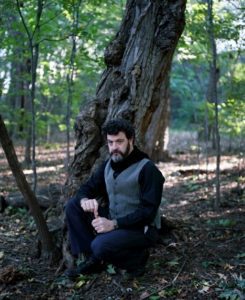
Picker, who has been cited by the Wall Street Journal as “our finest composer for the lyric stage” has a talent for dramatic depiction. The last time the Nashville Symphony performed one of Picker’s works it was his Opera without Words, which featured singing but without text, here it is the opposite, a melodrama made up of narrated text and accompanied by the orchestra. Picker drew on Herman Melville’s text for the Encantadas, which Melville wrote in 1854 while he researched for his Moby Dick in the Galápagos Islands onboard a whaling ship. Adopting Melville’s use of alliteration, Picker named his six-movement work Dream, Desolation, Delusion, Diversity, Din and Dawn respectively.
Picker’s score is dark and pensive, strikingly (neo-)romantic and beautiful but is always guided by the text. The striking entrance of the horns in the first movement, handled so well by Maestro Guerrero’s deft measure of balance and dynamic, wonderfully brought the “evilly enchanted ground” of Melville’s imagination to life. Indeed, the first movement served as a frame, describing the whole piece as a kind of memory. What followed was a string of marvelous depictions of a day in the Galápagos, from the “lashing rocks” to the “waltzing pelicans” pursuing the day, through the night and back into the dawn, with rarely a break between movements. In all, as a composition, the piece is a narration accompanied by orchestra and Guerrero never allowed the music to overwhelm Picker’s narration – a wise decision and a noted weakness of the existing recording. I am quite excited to purchase the recording being made of this performance.
One of the primary differences between Picker’s nature and Mahler’s is that Mahler’s is born of the Romantic ideal of man’s presence and part in nature itself. Whereas Picker’s narrator is an active observer of nature, Mahler’s narrator is a participant. The poet’s inner life is connected and paralleled with that of the external:
I weep often in my loneliness.
Autumn in my heart lingers too long.
Sun of love, will you no longer shine
Gently to dry up my bitter tears?
It is this perspective that provides Mahler’s piece its depth, breadth and gravitas, making this sixty-minute work seem much more than merely twice as long as Picker’s.
For the vocal parts, Nashville brought in mezzo soprano Michelle DeYoung whom we heard sing Verdi’s Requiem last season and tenor Paul Groves (replacing Anthony Dean Griffey just this past Wednesday) in the male part. Both performed quite well. Grove’s warm, clarion instrument was pushed to its ends in the first movement’s famous phrase “Dunkel ist das Leben, ist der Tod,” (Dark is life, is death) which appears a half step higher over and over again. This stress, imagined and intended my Mahler who was just coming to terms with his own mortality at the time, provided a remarkable opening movement.
Groves’ performance in the other two movements for his part, “3. Von der Jugend” and “5. Der Trunkene im Frühling” (often described as the work’s Scherzi in Mahler’s symphonic form) was equally marvelous.

Concertmaster Jun Iwasaki and Principle flutist Érik Gratton handled their solos admirably in the fifth movement drawing Mahler’s pastoral scene with a deft beauty.
However, if the male role is graced with the opening movement of the form, the female role will always win out because it is her part that brings the world that Mahler has created to an end. Indeed Mahler has built an expressive crescendo into her part. After a “somewhat dragging” (Etwas schleppend) and “weary” (Ermudet) second movement (2. Der Einsame im Herbstand” The Lonely Man in Autumn”), and the more exotic fourth (“4. Von der Schonheit” on Beauty), the finale, “6. Der Abschied” (The Farewell) brings the whole of the symphony to a formal and programmatic conclusion.
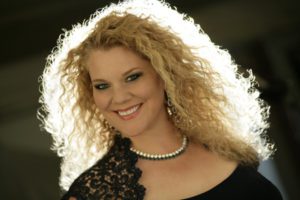
DeYoung performed with admirable precision, and great patience. In the second and fourth movements she maintained a certain amount of emotional restraint that allowed for a crescendo of feeling in the final movement. As the texture of the movement finally receded into the pedal point in the strings against Gratton’s lonely flute, DeYoung intoned the closing mantra “ewig” (forever) and it seemed as if the air had been simply pulled from the room. When the Maestro lowered his shoulders, I counted a good 90 seconds before the first wave of their earned standing ovation.
The Classical Series at the Nashville Symphony continues on the 21st with “Spanish Nights” featuring Peruvian conductor Miguel Harth-Bedoya
Voices of Spring: featuring the Nashville Symphony Chorus and Guests
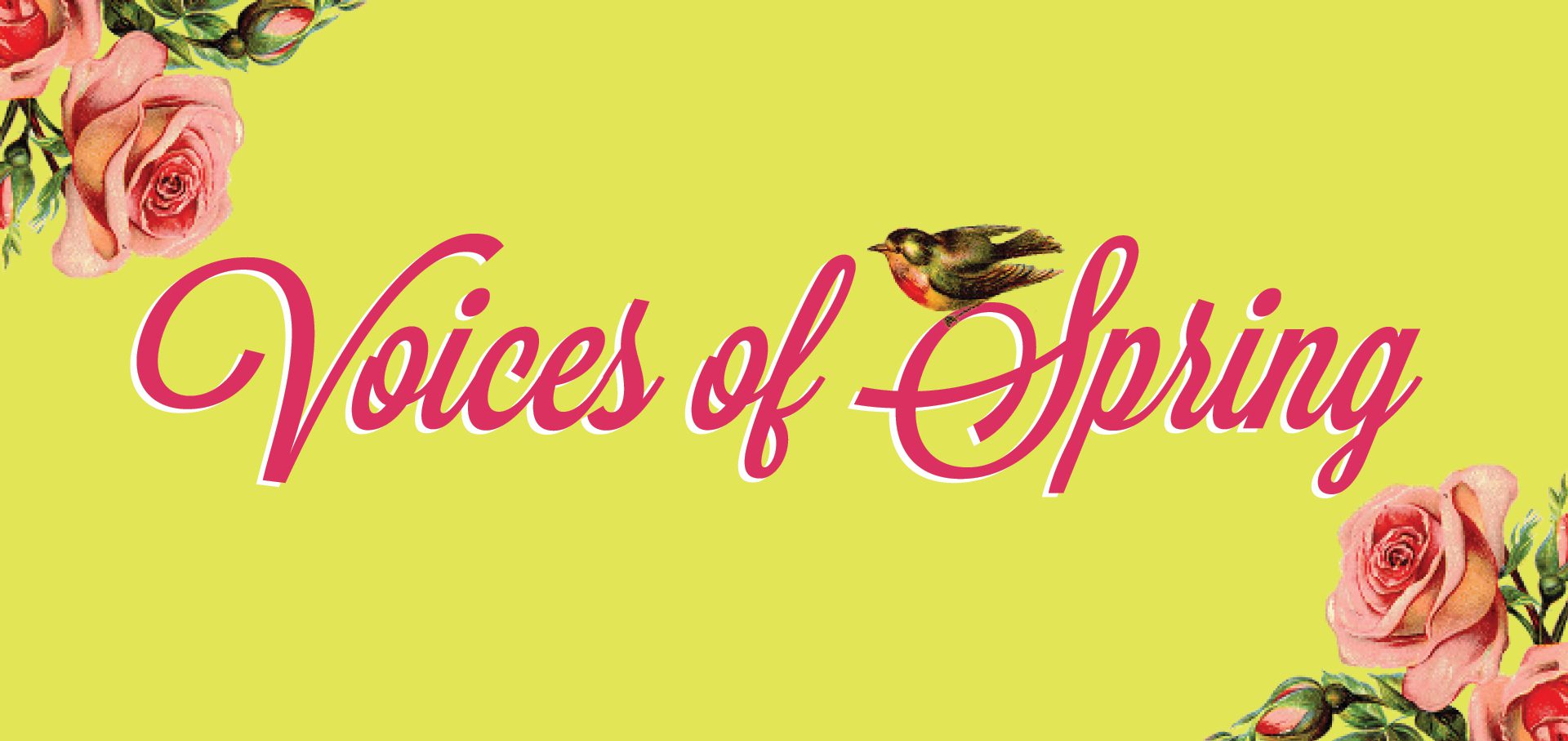
On Sunday, March 3, the Nashville Symphony and Nashville Symphony Chorus, conducted by Tucker Biddlecombe and Lauren Ramey, hosted their annual Voices of Spring choral showcase, which features a number of other vocal ensembles from the Nashville area. This year, the visiting ensembles included the Montgomery Bell Academy Chamber Choir, Nashville School of the Arts’ Paragon, the Middle Tennessee State University Women’s Chorale, and Vocal Arts Nashville. Admission to this event was free to the public and offered a wonderful opportunity for people who normally would not attend a concert to experience the Symphony, Symphony Chorus, and a number of local ensembles of all levels. The program was extremely varied, allowing each visiting ensemble to showcase an a cappella work and feature two numbers that included all five vocal ensembles as well as the Nashville Symphony. It truly was something to behold.
 The concert began with a beautiful setting of the traditional hymn “Come Thou Fount of Every Blessing,” by Mack Wilberg, which featured all of the ensembles present. The positioning of the ensembles in the hall created quite a unique effect, with ensembles on either side of the second floor, an ensemble in the back balcony, and two ensembles onstage with the orchestra. The piece started very delicately with just the MTSU Women’s Chorale singing from the back balcony, which was equally unexpected and beautiful, and created a very interesting surround-sound effect in the hall. The piece then featured some of the other ensembles individually throughout, and grew to a spectacular peak. It was quite possibly the loudest piece I have ever heard, but it was absolutely glorious and left everyone in the audience wondering how this could be topped!
The concert began with a beautiful setting of the traditional hymn “Come Thou Fount of Every Blessing,” by Mack Wilberg, which featured all of the ensembles present. The positioning of the ensembles in the hall created quite a unique effect, with ensembles on either side of the second floor, an ensemble in the back balcony, and two ensembles onstage with the orchestra. The piece started very delicately with just the MTSU Women’s Chorale singing from the back balcony, which was equally unexpected and beautiful, and created a very interesting surround-sound effect in the hall. The piece then featured some of the other ensembles individually throughout, and grew to a spectacular peak. It was quite possibly the loudest piece I have ever heard, but it was absolutely glorious and left everyone in the audience wondering how this could be topped!
The Montgomery Bell Academy Chamber Choir, a high school ensemble directed by Matt Smyth, performed Edvard Grieg’s “Brothers Sing On.” This very popular song for men’s voices is short and sweet, and was performed extremely well by the Chamber Choir. Every syllable was crisp and understandable, while still being expressive and staying true to the character of the piece. The ensemble’s blend and balance was exceptional, and their sound projected very nicely in the hall. It truly was an impressive performance from a group of young men, and added a wonderfully different blend of voices to the program.
The mood then shifted to the Nashville Symphony & Chorus’ performance of Haydn’s Te Deum for the Empress Maria Therese, which was beautifully conducted by assistant conductor Lauren Ramey. It’s always wonderful to hear the Symphony and Chorus perform together, and it’s a treat that doesn’t happen quite enough. As always, the Haydn was performed with all of the necessary elegance and technique, and served as the perfect middle ground between a five-chorus and orchestra affair and the many a cappella features of the program.
The Nashville Symphony & Chorus, conducted by Tucker Biddlecombe, later premiered World Without End, a piece by Nashville-based composer Daniel Elder. Interestingly enough, this piece’s text is the same as the Haydn, but instead translated to English, which created a wonderful link in the program. This piece truly showcased the large, well-blended sound of the Nashville Chorus, as well as their skill to always stay in balance with the orchestra. This premiere was full of so much energy and featured many different styles and moods, all of which were perfectly conveyed by the Symphony and Chorus.
It was also a very nice touch for Mr. Biddlecombe to address the audience directly, and to inform them about the connection between the Haydn and the Elder. It truly made this performance feel like a community event, and helped lighten the mood of a classical concert for those who wouldn’t normally attend. His personality is very charming and he truly made everyone in the hall feel welcome.
Nashville School of the Arts’ Paragon, directed by Trey Jacobs, performed Desh, a Traditional song arranged by Ethan Sperry. This piece is a complex and interesting setting of a traditional folk song, which featured many different rhythms and timbres simultaneously. These different timbres were embraced fully and executed wonderfully by the ensemble, and made the piece truly stand out from all of the others on the program. All of the rhythms and different individual moving parts of the piece were so steady and clean that they worked together wonderfully, and made for a truly great performance. It’s always a treat to hear such talented young musicians in performance.
The MTSU Women’s Chorale, directed by Angela Tipps, performed “Voice on the Wind,” by Sarah Quartel, a piece for women’s voices and percussion. Similarly, to the first piece on the concert, this piece began with a gorgeous solo before adding more voices and harmony. The Women’s Chorale put so much powerful energy into the piece, with even more added by the ever-present beat from the percussion. The blend and balance of the women’s voices was wonderful to hear, and this emotional and exciting piece showcased the ensemble’s strengths quite well. As an alumna of this ensemble, it was a very personal and special moment to hear them sing again.
Vocal Arts Nashville, an up-and-coming professional vocal ensemble directed by Matthew Phelps, performed four selections: “Sweet Honey Sucking Bees” by John Wilbye, “My Soul There is a Country” (from Songs of Farewell) by Charles H. H. Parry, “Deep River” by Gere Hancock, and “Jesus Was an Only Son” by Bruce Springsteen, arranged by Dunnavant. It was refreshing and interesting to have a smaller ensemble on the program, and they did not disappoint. Their selections had a nice variety in style and featured individual members of the ensembles nicely. The overall blend and balance of the ensemble was quite nice as well, especially the lower voices. Like all of the other ensembles on the program, Vocal Arts Nashville brought their own sound and style to the table, and showcased it confidently and passionately.
The concert was closed with “The Battle Hymn of the Republic” by William Steefe, arranged by Wilhousky, and again featured all five vocal ensembles and the Nashville Symphony. While I was a bit skeptical about the piece, it was a pleasant setting of the tune and text, with wonderful interplay between the orchestra and all of the vocal ensembles. Once again, the “surround sound” effect of voices from all sides of the hall was put to good use, with interjections from the ensembles in the balconies at different times during the piece. There was also a wonderful male quartette feature from the members of Vocal Arts Nashville, which added another special touch. The piece ended even larger than the first number of the concert, which did not seem possible, but it was an absolutely perfect end to an afternoon of vocal music.
Overall, it was a wonderful free concert that was well-received by a large audience. It was a wonderful opportunity to get to hear ensembles that normally would not be heard by such a large audience, and surely it was a wonderful experience for all of the performers involved. It is truly special that the Nashville Symphony & Chorus offers this experience annually!
Novel Noise: A Celebration of Tennessee
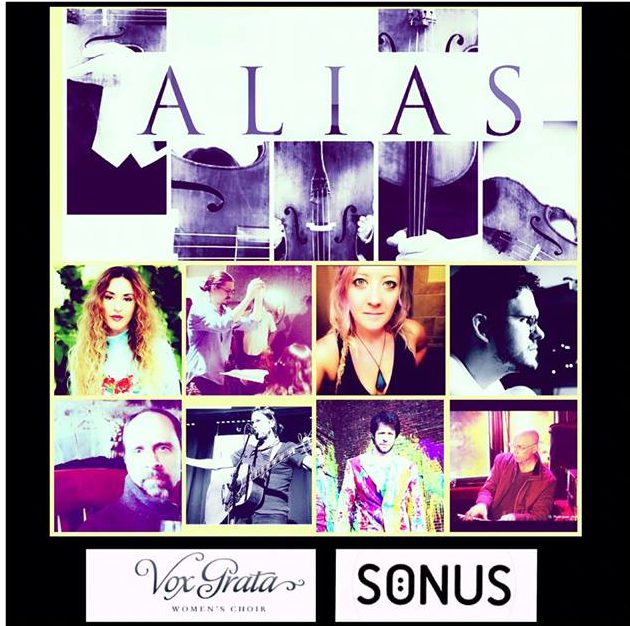
On Sunday, February 24, the Alias Ensemble performed the final concert of its three-part “Novel Noise” series. The series aims to provide the listener “unique and unusual sounds” and seems to want the audience to question the distinction of classical music as a genre and its relation to other types of musics. Keeping with the “unique” theme, in the strictest sense possible, the program offered eight world premieres for composers, mostly, working in or around the Nashville area.
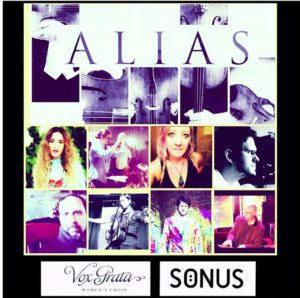 The first piece of the night was from one of the composers on the program who is not currently working in the Nashville area. Dabney Morris is currently working out of Los Angeles and has an impressive resume including many arrangements and, most notably, presence on the score of the upcoming Netflix film, All the Bright Places. Morris’s contribution to the night was a piece entitled Burnt Norton, named after the first poem in T.S. Eliot’s Four Quartets. The piece’s instrumentation is not, as you might suspect, a quartet, but rather an octet consisting of a string quintet and a woodwind trio.
The first piece of the night was from one of the composers on the program who is not currently working in the Nashville area. Dabney Morris is currently working out of Los Angeles and has an impressive resume including many arrangements and, most notably, presence on the score of the upcoming Netflix film, All the Bright Places. Morris’s contribution to the night was a piece entitled Burnt Norton, named after the first poem in T.S. Eliot’s Four Quartets. The piece’s instrumentation is not, as you might suspect, a quartet, but rather an octet consisting of a string quintet and a woodwind trio.
The piece itself seems to take inspiration from the slow pace, non-confrontational tone, and meditative nature of Eliot’s poetry. The piece seems to wander through sections, happening upon small themes along the way, seemingly meant to be more immersive than formulated. It offers a nice experience of pleasant tone combinations, thanks to the instrumentation, and interesting harmonies.
The second piece was by Peter Bradley Adams, a composer and singer-songwriter based out of Brooklyn, NY currently. His Little Flower is a piece for string quartet, two guitars, and two vocalists in octaves rather than other harmonies, at least throughout most of the piece. The piece opened with an introduction from the strings that sounded right off of the latest country single, with static harmonies and an emphasis on that stasis. The group is then joined by the guitars and the vocalists continuing this juxtaposition of the two genres. The piece continues with its three verses and then concluded with a return to the harmonic stasis of the string quartet.
Third in the program was Bruce Dudley’s Between Light and Dark. Dudley is a professor at Belmont University in Nashville and has numerous composing and performing credits to his name. The piece is written for a cello quartet and piano, which is a decently unusual instrumentation (no doubt contributing to its inclusion in the Novel Noise series). Other than the unique instrumentation, the piece, as shown in the program notes (with references to Shostakovich’s more jazzy output), continues the pattern of questioning and, at times, seriously doubting the distinction between classical and jazz genres. The piece built from rising chords in the cellos into what presents almost like a piano concerto with a quartet accompaniment throughout the piece. The piece seems to borrow, directly, harmonies from Shostakovich’s Trio #2 at times and continues to feature the piano, played beautifully by Dr. Dudley, until the final cadence.
Stephen Lamb’s Autumn Quince followed in the order of the night. Lamb is from Chattanooga, just down the road, but moved to Nashville in 2006 to work in the booming music industry. Lamb also is an avid poetry reader, as evidenced by his website, claiming that he read a whopping 37 poetry collections, with much inspiration bleeding into his work. His Autumn Quince is one such work. Inspired by, and named after, Jane Hirschfield’s Gravity and Angels. It is a piece for mixed strings and woodwinds and a single vocalist. Patrick Dailey, the vocalist for the night, delivered a stunning performance, giving a seemingly effortless performance of what must have been an incredibly difficult part.
Jordan Lehning’s A Little Light is a piece of great extremes. A cacophony of tension, jagged rhythms, and largely irregular harmonies was a jolting and quite welcome difference from the relatively calm night before it. The instrumentation is, more or less, a clarinet quintet (clarinet and string quartet) plus percussion instruments and piano. Violent harmonies and rhythms are not alone in the piece, counter-played by quite nice, diatonic calm sections. The piece was definitely my highlight of the night.
Following this was a very close second in my mind. Cristina Spinei’s Emergence is scored for a string quartet and an electric bass, a strange addition, all things considered. The piece was like an amazing nostalgic recreation of a Steve Reich piece. Yet it did not over-stay its welcome. Short, sweet, and so subtly complex, the piece is definitely among the best. Mastery of the minimalist style created an accessible, yet quite deep piece that could easily be in the group of Riley, Young, Reich, and Glass.
Matt Walker’s A Elbereth was next up. Scored for violin, viola, cello, harp, and women’s choir, our much-appreciated cellist from the Nashville symphony calls upon text from Lord of the Rings author and master linguist J.R.R. Tolkein for his large choral work. The choir and chamber musicians worked flawlessly together and delivered a nice performance of the work.
Somehow adding to the personnel on stage, Timbre Ciepke’s Gulfoss is scored for two violins, viola, cello, bass, two flutes, alto flute, and two choirs. The Vox Grata Women’s Choir (who also performed Walker’s work immediately before) and the SONUS Choir delivered the performance with the amazing chamber ensemble. The piece is inspired by a waterfall and is directly representational, being quite like a tone-painting in that way. Alias’s concert created a wonderful, diverse program showcasing a lot of talent from the Nashville area.
Wu Fei’s Hello Gold Mountain at Ingram Hall
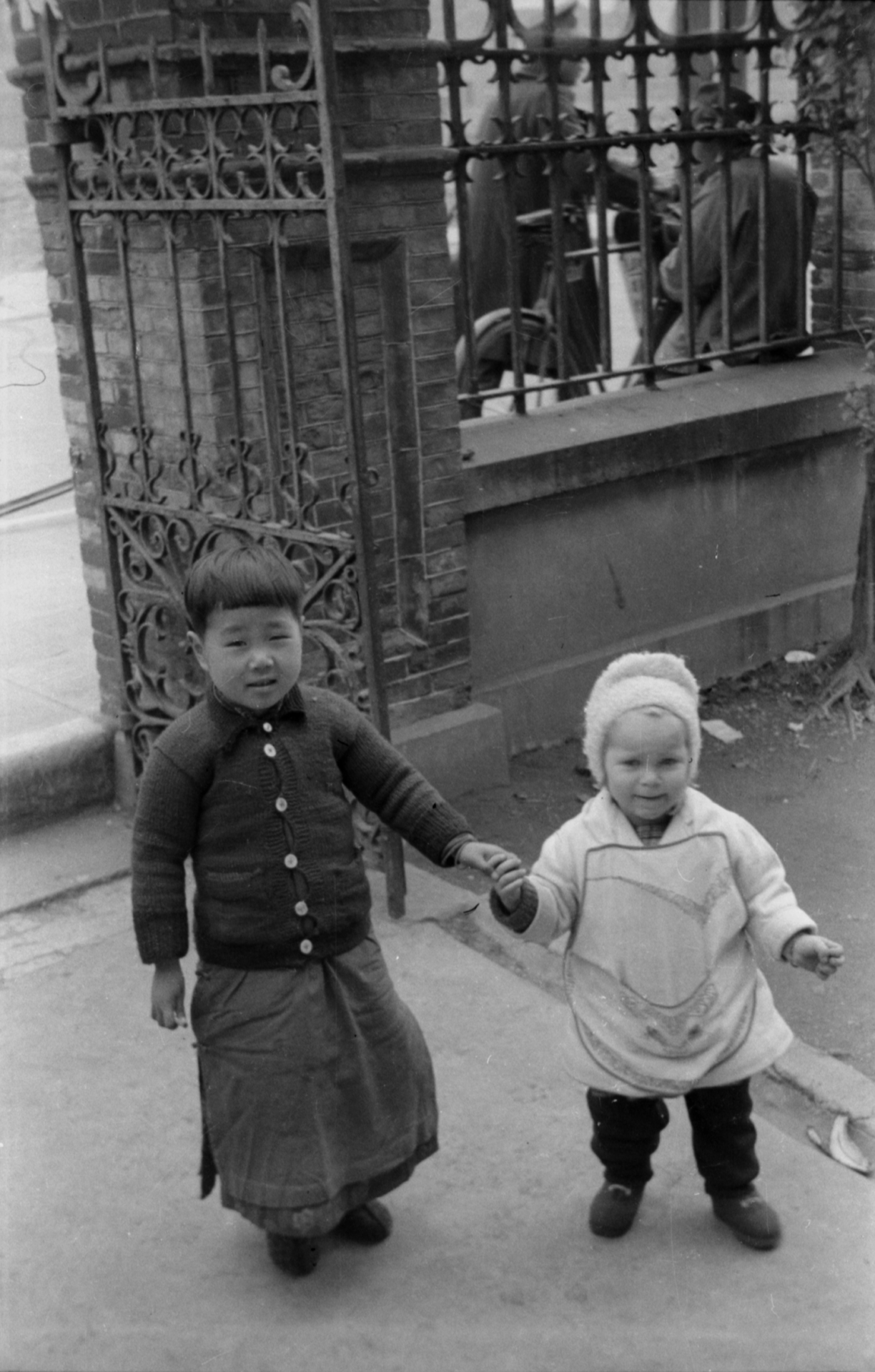
We live in an age of immigration. Since 2016 over 5 million refugees have fled the warzone in Syria and nearly a million Rohingya Muslims have fled persecution in Myanmar. Although there is some debate as to whether it merits such a proclamation, our own President has declared a state of emergency for fear of an influx of immigrants from the South. Chatterbird, a Nashville ensemble whose focus is on uniquely orchestrated music, dealt directly with this topic in its most recent concert, Hello Gold Mountain in a world premiere composition by their composer in residence, Wu Fei.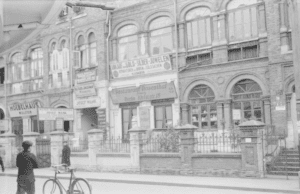 Fei’s Hello Gold Mountain: a requiem for lost possibilities of the Jewish community of Shanghai “tells the stories of Jewish refugees who fled from Europe to Shanghai during WWII and later from Shanghai to San Francisco during the Chinese Civil War.” This seven-movement programmatic work contains aleatoric elements as well as contemporary sounds enmeshed within evocative gentle references to the programmatic element. The performance featured the wonderful Chatterbird ensemble enriched by both Wu Fei’s performance on the guzheng (a 21-string zither) and Shanir Ezra Blumenkranz, a virtuosic player of the middle eastern oud. The ensemble was complemented by traditional Western instruments such as the piano and the clarinet.
Fei’s Hello Gold Mountain: a requiem for lost possibilities of the Jewish community of Shanghai “tells the stories of Jewish refugees who fled from Europe to Shanghai during WWII and later from Shanghai to San Francisco during the Chinese Civil War.” This seven-movement programmatic work contains aleatoric elements as well as contemporary sounds enmeshed within evocative gentle references to the programmatic element. The performance featured the wonderful Chatterbird ensemble enriched by both Wu Fei’s performance on the guzheng (a 21-string zither) and Shanir Ezra Blumenkranz, a virtuosic player of the middle eastern oud. The ensemble was complemented by traditional Western instruments such as the piano and the clarinet.
The most intimate movement of the evening featured Blumenkranz and Fei improvising freely, sharing riffs and melodic thoughts that seemed to connect these instruments of highly disparate cultures, surely a result of Blumenkranz’s experience with the Silk Road Ensemble, nevertheless this remarkable effect proved a powerful message to remind one of shared humanity when cultures clash.
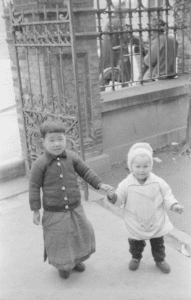
Perhaps the most amazing aspect of the project, one that Fei began years ago in 2006, was that the ensemble found a local connection to this group. A local woman, Sarah Rose Schiftan gave a reading of Chaim Nachman Bialik’s Take Me Under Your Wing, in memory of her grandmother Edith Schiftan, who was one of those who found refuge in Shanghai. The moment was quite poignant and served to remind us of the real-world consequences of these historically and geographically distant events.
The Sixth Movement “Shanghai Dark Sea,” a slow dirge featuring Fei’s own haunting voice, tremolo strings and Theremin-like bowed pipes, made the sorrow of those “lost possibilities” tangible. Further, Fei ensured that each member of the audience entered into the story through a simple chant that she printed in the program and which the conductor directed the audience to sing, effectively connecting everyone in the room. At the end of the performance, during the pregnant pause before the standing ovation I reflected on what Fei had written about the composition on its dedicated website: https://www.hellogoldmountain.com/about
“What musical possibilities were lost because the times did not allow neighbors from these different cultures to grow old together, sharing songs and stories? Similarly, what artistic creations will be lost if Europe and the United States close the door to refugees and migrants from lands in chaos?”
It is right and proper that we should consider the past in our decisions regarding the present. With this performance, Chatterbird has done us all a wonderful service in reminding us of that ancient fact. Further, they have also presented a composition whose political and cultural relevance will not soon pass.
Nashville Symphony presents Kernis, Barber, and Beethoven
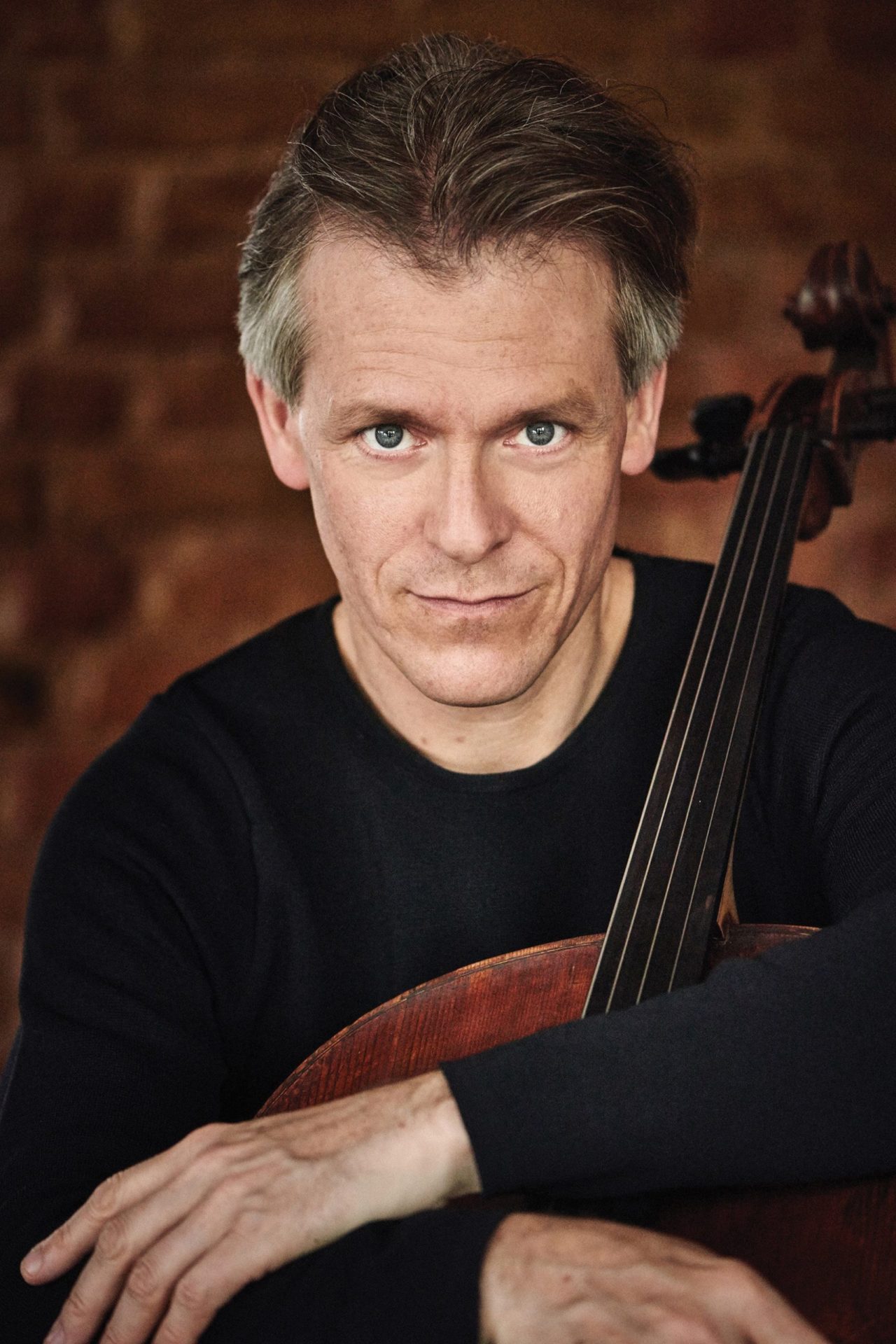
This past weekend The Nashville Symphony presented a true cornucopia of musical selections: a contemporary new work by Jay Kernis, a challenging and versatile cello concerto by Samuel Barber, and a classic masterwork by Ludwig van Beethoven. In a way, what was presented during a somber and rainy week in Nashville felt as though you were stepping into a museum of varying works of art. The program was diverse and thoughtfully put together, presenting a wide array of selections running the gamut from 19th-century classical polyphony to 21st-century grit that leaves you lost in thought, wishing for more, and then utterly satisfied by the time you reach Beethoven’s finale.
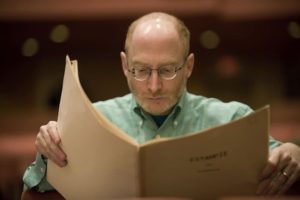
The night began with ‘Chromelodeon’, a new work by New York City-based composer Aaron Jay Kernis. As if his Pulitzer Prize in Music and 2019 Grammy nomination weren’t enough to catch the audience member’s attention, surely the chromatic and otherwise hectic first movement that unfolds was sure to do the trick. The composer describes the piece as “chromatic, colorful, melodic music performed by an orchestra.” Another way that the composer describes the aurora of this piece is how his composing reflects the emotional tenor of the time in which he writes. He hints at “the influence of living in the chaos of the world today” and how this might play a role “at a ‘molecular’ emotive level.” Truly this mood and overall chaos are evident throughout the piece. Whether it be in the “colorful” sounds of the bells at the beginning, or in the operatic second movement which switches from a theme after Handel into a tradeoff of dark melodies between violin and viola that eventually decomposes into nothingness. All of this leads up to the final movement: where harmony and chaos seem to fight until the piece ends abruptly, with a loud outburst open fifth of F and C. Kernis’ ‘Chromelodeon’ is an unabashed, contemporary work of art that must be experienced live to truly understand every facet and intricacy of the work.
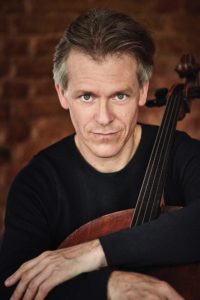
The evening then segued to an even broodier, pensive, and extremely challenging work by Samuel Barber. A composer known for his beautiful and aching melodies can also somehow compose a concerto so challenging very few orchestras can muster the talent to perform it. This being the first performance for the Nashville Symphony, one can also expect that the orchestra was just as excited to play it as Maestro Guerrero was to conduct it. Couple this energy with world-class cellist Alban Gerhardt, and what was presented was a mesmerizing performance that paired wonderfully with the contemporary piece before it. Gerhardt’s playing was sensitive and so delicate in the high register, that if one were to close their eyes during the aggressive and fierce sections, it’s possible that one could imagine a completely different soloist had entered the stage. The accompanying Nashville Symphony relish their opportunities, with exuberant, attacking violins in the first subject and eager response to the finale’s more angular dissonances. Guerrero seems on top of every aspect of this score and, while the performance is not always as expansive as it might be, the playing was superb. Woodwinds, especially principal oboe Titus Underwood, truly shines just as much as the outstanding cellist.
The Nashville Symphony concludes the evening by choosing one of the less flashy, less complex Beethoven symphonies: The Seventh. As if the two compositions prior weren’t enough to show off the orchestra’s brawn and musicality, they continue by playing with an exuberant energy that was still present yet. In particular Nashville Symphony fashion, the orchestra showed that they can perform a new contemporary American composition as well as a Classical masterwork on the same concert without sacrificing style and artistic clarity. From the get-go, Beethoven’s Seventh Symphony is notable in the composer’s oeuvre for its rhythmic, joyous spirit — a contrast to his other symphonic works, which tend to unfold as epic journeys from darkness to light. It seemed this programming was quite purposeful (the audience is surely yearning for that traditional harmony and satisfying cadences by now). And the players delivered a remarkable first movement that was gleaming with excitement and energy.
As the rest of the work unfolds, Beethoven uses harmony and rhythm together to unify each movement and bind them one to the other. The melancholy, darker second movement is one that provides a brief reprieve from the light-hearted outer movements. Sprinkled with moments of delicate counterpoint in between the swells, this movement requires transcendent balances between each section. And every symphony member delivered. In stark contrast, the third movement Presto takes the form of contredanse, an unrefined but popular dance style. Presto indeed, Guerrero used this movement to show off his orchestra’s ability. Even, in certain spots, stopping his baton all together to allow the orchestra to take control. The work closes with a mighty finale that modern commentator Maynard Solomon interpreted as “a critique” that “undermines the precepts of a calm and symmetrical Classicism, preferring those dynamic polarities of tranquility and terror, containment and abandon, and dream and intoxication that Nietzsche later identified as ‘the Apollonian-Dionysian duality.’” The mighty piece sounds forth and forth until orchestra reaches utter climax, concluding in triumph that calls for a Bravi and immediate standing ovations. Overall, one could say that this was a solid evening of varying and challenging music by Music City’s finest.
Intersection presents its third ‘Upon these Shoulders’ event with Hannibal Lokumbe’s ‘Crucifixion Resurrection.’
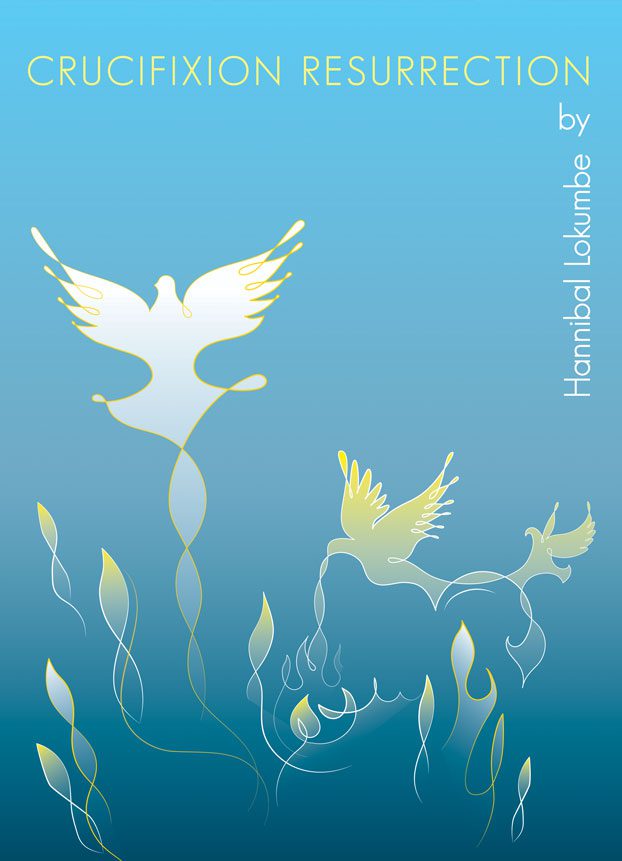
On February 9, 2019 Intersection and Choral Arts Link presented its third Upon These Shoulders concert at Fisk University. This annual concert series seeks to highlight “the voices of civil rights foot soldiers who forged new freedom pathways and whose strong shoulders continue holding us up.” This year Intersection brought in classical composer and jazz trumpeter Hannibal Lokumbe to present a number of lectures and his masterpiece Crucifixion Resurrection: Nine Souls a-Traveling (2017), which is a requiem for the nine victims of the mass shooting at Mother Emanuel African Methodist Episcopal Church in Charleston, South Carolina. The evening was remarkable, not just for the aspects that made it a celebration, but also the deep emotions and grief experienced by everyone in the room; I believe it took us all by surprise.
The evening began with a “Walk of Love” which proceeded from the front of the Fisk Chapel to Jubilee Hall on Fisk University Campus. At the front of the building one of the Fisk singers described its history as the very building the Jubilee singers funded with their tour in 1873, saving the university by acquiring the funds to build the first permanent structure for the explicit purpose of the education of black students. Inside the building remains the original portrait of the singers, commissioned by Queen Victoria after their visit.

After some discussion the audience returned to the chapel to hear Sarah Collins, the survivor of the 1963 bombing of the 16th Street Baptist Church in Birmingham, Alabama speak of her experiences of that day. Collins, in her discussion, detailed the events of the day, but also spoke of her time in the hospital after, recovering.
This was followed by Tyler Samuel’s performance of Caccini’s Ave Maria, in an arrangement by Andre van Haren. It was already a remarkably moving evening as Lokumbe and Maestra Corcoran took to the stage.
Inside the Fisk Chapel, while waiting for the concert to begin, the full audience took in the standards painted by Steve Prince which represented the 9 victims, now canonized by Lokumbe and Prince as Saints. The paintings including various aspects and relics of their lives. Indeed, the evening was nothing short of ritual. The work’s movements, titled veils, were a testament given from each victim who, when asked “What is it you would ask to be recorded into the Book of Ages?” gave an imagined testimony of their thoughts in the moment of the shooting. Some were quite powerful, especially the forgiveness of the murderer:
As the flog of crossed stars began to flutter inside the narrow space of his houng shattered heart – Reverend Pickney extended to him the hand of grace – but the shadows surrounding him and the tongues whispering to him from within the fluttering blood stained banner – commanded that he do – what they sent him to do.
(Veil Three: Ethel Lee Lance)
Or messages to the loved ones they left behind as they proceeded to their reward:
At the church that night, it made it easier to bear, knowing that our children would have you to comfort them and to help them heal from the madness of it all. And for your comfort and healing my blessed husband you have the eternal truth of my love, Your Loving Wife, Myra.
(Veil Five: Myra Thompson)
As they read or sang these texts the performers broke down and or had to pause—indeed I couldn’t find a dry eye in the audience. Soprano Koko Onwuzuruigbo and Mezzo Soprano Funmike Lagoke both brought a rich and emotional delivery that brought their saints to life—particularly the vocalise of “Veil Eight: Susie Jackson.” Tenor Roderick Dixon performed with an enchanting charisma, especially in the “Veil Nine: Tywanza Sanders,” where his dialogue with the choir and repeated exclamations for Freedom brought the room back into a joyous celebration. The MET singers, a wonderful children’s choir directed by Margaret Campbelle-Holman, were exquisitely prepared as always and the enthusiasm of the adults in the community choir helped to contribute to the magic of the event.
Lakumbe’s skills as a composer are quite wide ranging from the through-composed classic 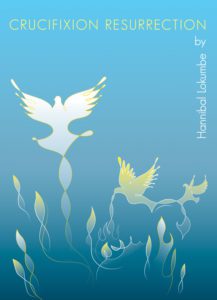 genres to the blues inflections of a second line march, the music was at times raucous, moving, celebratory or devastatingly tragic in its push further down Charles Mingus’s third stream. However, Lokumbe’s chops on his trumpet were equally remarkable. Extended techniques, circular breathing and, in moments, a simply beautiful tone clearly demonstrated the genius of this man’s playing. The rhythm section of David Pulphus (bass), Cecil Brooks III (percussion), and Anthony Wonsey (piano) maintained a pocket that was high and wide, facilitating each of their own incredible solos in the improvisatory sections of the composition, particularly in the “Veil Two: Daniel Simmons Sr” a victim who had a love for music.
genres to the blues inflections of a second line march, the music was at times raucous, moving, celebratory or devastatingly tragic in its push further down Charles Mingus’s third stream. However, Lokumbe’s chops on his trumpet were equally remarkable. Extended techniques, circular breathing and, in moments, a simply beautiful tone clearly demonstrated the genius of this man’s playing. The rhythm section of David Pulphus (bass), Cecil Brooks III (percussion), and Anthony Wonsey (piano) maintained a pocket that was high and wide, facilitating each of their own incredible solos in the improvisatory sections of the composition, particularly in the “Veil Two: Daniel Simmons Sr” a victim who had a love for music.
From Fisk University in 1873 to Birmingham, Alabama in 1963 to North Carolina 2017, the evening told a story of the racial troubles in the United States but it also gave a vision of hope and forgiveness—a path for the future. Each year Intersection’s Upon the Shoulder’s concert is one of the most important culture events in Music City and this year is no different. I am quite interested to see what they do next year.
Attitude: Lucy Negro Redux gives a voice and a story to the “Dark Lady,” Shakespeare’s mysterious love interest.
“I have walked Lucy’s walk all my life” narrates Caroline Randall Williams, author/poet of the book upon which the ballet is based. Williams’ spoken word in the ballet is Lucy’s voice in Elizabethan era and simultaneously Williams’ own voice as a woman of color. It speaks from the perspective of minority and otherness but with a proud and firm voice. Dancer Kayla Rowder interprets each line and more: she is able to portray the development of Lucy as a character that claims her power for herself. Composer/musician Rhiannon Giddens further contributes a dimension to Lucy in scoring music that draws from African roots, traditional American music, and Renaissance styles. Giddens’ singing puts emphasis on Lucy’s soul as an important aspect in her story.

The ballet production of Lucy Negro Redux is the collaborative effort of Nashville Ballet artistic director Paul Vasterling and Caroline Williams. Their respective visions for this work are completed by the added efforts of musicians Rhiannon Giddens and Francesco Turrisi.The co-composers used voice, piano, cello banjo, minstrel banjo, long necked lute, frame drums, and fiddles in the live performance of the score.
The ballet opens with Williams on stage in a red cocktail dress as narrator and Lucy (Rowder) in simple nude undergarment. Through the narrators spoken word we are introduced to both women. Williams’ theory is that the subject of Shakespeare’s sonnets 127-152, and commonly known as the “Dark Lady sonnets,” is a black girl. The dark lady is unidentified in historical sources but Williams became convinced that indeed Shakespeare had a black lover and the opportunity to give her a voice by writing was irresistible. It becomes clear that Williams found the potential to tell her own story while creating Lucy’s story and the reflection of Lucy in Williams is exposed by the dancer’s movements in the prologue.
In the first scene the women are whisked away to a London train station to meet a professor who provides research to support the Lucy Negro theory. The ensemble is in costumes of brightly colored street clothes to depict a bustling station and the busy choreography is reflected in a driving repetitive rhythm from banjo and percussion. The momentum injected into what felt more like a play suddenly becomes an energetic ballet. Lucy, now in red also, pairs with the Professor (Sjoblom) as he explains his theories of Shakespeare’s dark lady. Williams comically quotes sonnet 130, “If hairs be wires, black wires grow from her head…” and begs to be told that’s not a black girl. Sjoblom essentially controls Rowder’s dancing as he plays the Professor discussing his idea of Lucy to Williams.
A genuinely handsome Shakespeare (Thorne) appears in the fourth scene alongside Lucy, now in Elizabethan era. His costume is exactly what one would expect the Bard to be wearing: Green top and brown tights. He is purposefully characterized as obsessed with and swooning over Lucy who, in every way, looks the seductress in her red dress. Williams makes it clear that Shakespeare is not the subject of this story as Lucy develops into her own character.
Lucy Negro was a known brothel owner and Shakespeare an apparent patron. At Lucy’s place, there is a sense of ownership and pride from her. The music provides her with a bluesy theme with Giddens singing lyrics including “this is Lucy’s place.” Alternating with the singing is Williams’ spoken word in an enthralling and well-performed duet with Giddens, sharing some of Lucy’s thoughts on running a brothel, being the object of lust, and being in the business of pleasure. Lucy’s women are scantily clad dancers in a fog-filled den who dance for her. The Fair Youth (Scheuer) is introduced among the harlots as the ideal male form of desire. He is also the subject of sonnets 1-126 preceding the Dark Lady sonnets. Scheuer’s posture and movements are commanding. His muscular physique compared to Thorne’s once again draws attention away from Shakespeare’s character. Both the Fair Youth and Lucy are subjects of Shakespeare’s passion and yet are portrayed as larger, more central figures than he in the performance.
The Fair Youth brings a lustful weakness to Shakespeare and the two share a scene in which the sensual choreography entangles them. They move across the stage, on the floor, and into each other’s arms.
The ninth scene is set with Shakespeare writing at his table while his lines come to life as dancers on the stage. The music is pensive, lending repetitive themes on the violin to the dancers’ movements. Turrisi’s piano playing is dreamlike and fills moments of the performance with an air that is fresh and calming. The two musicians are able to play two or three instruments at a time and create such complex compositions.Before intermission, a whirl of fierce duets between Lucy and Shakespeare takes place. The love triangle has come to a head. Confrontation and argument are interpreted by the dancers with such delicate movement. What seems difficult to express while maintaining gracefulness they do with perfection. Williams narrates the difficulties of life as a black girl in a white man’s world which ties the two women’s stories together: modern and past. Lucy rejects Shakespeare’s pleading and stands resolute and proud as Williams’ words go beyond describing a couple’s struggles and encompass a struggle of color and gender that spans time.

Following intermission, the Gesta Grayorum scene involves a large ensemble with many props and costumes and the festivities of the scene allude to orgiastic events. It is a spectacular scene but hardly pertaining to the three characters. Rather, the celebration provides relief from their tension and puts on display the fabulous cast. The final few scenes are strung together to rejoin the love triangle of Lucy, Shakespeare, and the Fair Youth. They are brief and dreamy but aesthetically captivating.
In the epilogue, resolution, claiming power, and knowing one’s own beauty are the themes presented as Williams and Lucy are the only characters once again remaining on stage. The women no doubt stand proud and confident. Lucy, en pointe, moves through her solo finale while Williams recites her closing statements and Giddens walks from her set to center stage while humming and beating her chest.
At moments in Lucy Negro Redux the theater became a place where art forms combined to reach heights that were unbelievably rich and satisfying, specifically the scenes in Lucy’s brothel where the music was supporting such intense spoken word as well as Shakespeare and Lucy in scenes of passionate love and anger. The powerful ending with all three women in red uniting their expressions of poetry, dance, and music gave each of them Lucy’s story for themselves.



